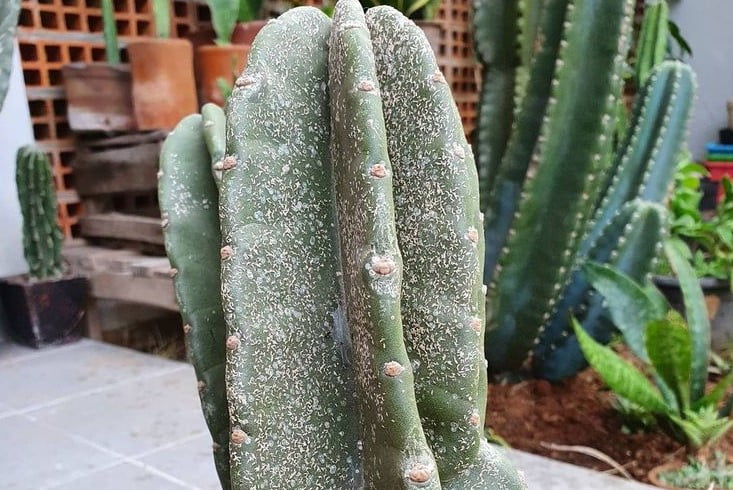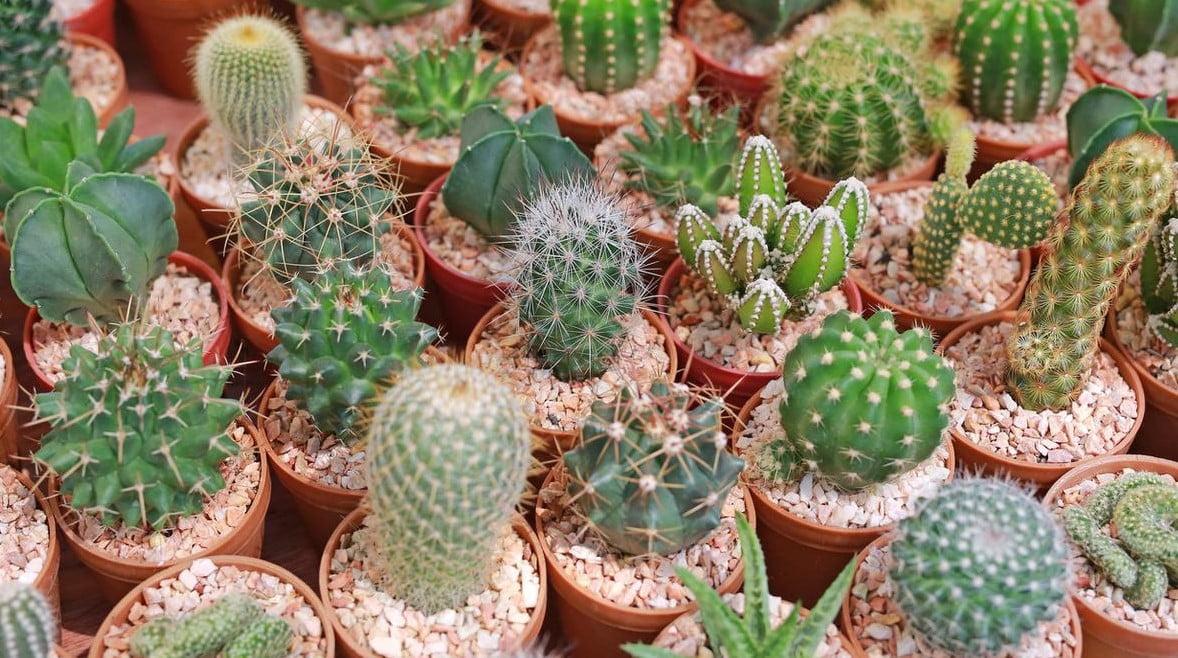The Ultimate Guide to Understanding and Treating Cactus Sunburn
You’ve just brought home a beautiful cactus, carefully placing it in a spot where it can bask in the glory of the sun. A few days later, you notice something alarming: the once vibrant green skin of your cactus has turned a sickly yellow or brown. Your cactus has a sunburn. Yes, plants can get sunburned too, and cacti are no exception. Understanding cactus sunburn is crucial for any cactus enthusiast, whether you’re a seasoned gardener or a newbie. This comprehensive guide will delve into the what, why, and how of cactus sunburn, offering actionable insights for prevention and treatment.
Table: Key Takeaways
| Topic | Key Point |
|---|---|
| Sunburn Basics | Excessive UV exposure leads to cellular damage. |
| Common Problems | Overwatering and sudden light changes can exacerbate sunburn. |
| Prevention | Gradual acclimation and proper watering are key. |
| Treatment | Immediate action can mitigate damage; long-term care varies based on severity. |
What is Cactus Sunburn?
Cactus sunburn is more than just a cosmetic issue; it’s a sign of cellular damage. When a cactus is exposed to more sunlight than it can handle, the ultraviolet (UV) rays begin to break down the cells in the outer layers of the plant. This leads to discoloration, which can range from a pale yellow to a dark brown, depending on the severity of the exposure.
Signs and Symptoms of Cactus Sunburn
- Discoloration: The most obvious sign is a change in color, usually turning yellow or brown.
- Softening: The affected area may become soft to the touch, losing its typical firmness.
- Shriveling: In extreme cases, the cactus may begin to shrivel up, indicating severe dehydration.
Sun Stress vs Sunburn
It’s important to distinguish between sun stress and sunburn. Sun stress can actually be beneficial and is often sought after by gardeners for the vibrant colors it can bring out in the plant. Sunburn, on the other hand, is harmful and can lead to long-term damage or even death of the cactus if not addressed.
Table: Sun Stress vs Sunburn
| Feature | Sun Stress | Sunburn |
|---|---|---|
| Color Change | Vibrant hues | Yellow to brown |
| Texture | Remains firm | Becomes soft |
| Reversibility | Yes, with less sun | Often permanent |
How Does Cactus Sunburn Happen?
Understanding the mechanics of cactus sunburn requires a bit of a dive into the science of plants and light. Cacti, like all plants, require sunlight for photosynthesis. However, there’s a limit to how much light they can use. When this threshold is crossed, the excess light becomes harmful rather than beneficial.
Role of UV Radiation
Ultraviolet (UV) radiation is a component of sunlight that is beneficial in small doses but harmful in excess. For cacti, too much UV radiation can lead to the breakdown of cellular structures, causing the symptoms of sunburn.
Sudden Exposure to Excessive Sunlight
One common mistake is suddenly moving a cactus from a low-light environment to direct sunlight. This abrupt change doesn’t give the plant time to acclimate, leading to sunburn.
Environmental Factors
Other factors like temperature and humidity can exacerbate the effects of sunburn. High temperatures can make the sunburn worse, while high humidity can slow down the rate at which the cactus can heal itself.
List of Factors Contributing to Cactus Sunburn
- Excessive UV radiation
- Sudden change in light exposure
- High ambient temperatures
- High humidity levels
Can a Cactus Recover from Sunburn?
The question of recovery is often the first thing that comes to mind when you notice your cactus is sunburned. The good news is that cacti are resilient plants, but the bad news is that the damage from sunburn is often permanent.
Short-term and Long-term Effects
In the short term, you may notice your cactus becoming more susceptible to diseases like root rot or fungal infections due to its weakened state. In the long term, the sunburned areas are likely to remain discolored and may become scar tissue, which is incapable of photosynthesis.
Assessing the Damage
The first step in assessing the damage is to carefully examine the affected areas. If the damage is limited to a small area and the cactus otherwise appears healthy, there’s a good chance of recovery. However, if a large portion of the cactus is affected, it may be best to consider propagation methods to save the healthy parts.
Table: Assessing Sunburn Damage
| Level of Damage | Symptoms | Recommended Action |
|---|---|---|
| Mild | Small discolored spots | Move to shade, monitor closely |
| Moderate | Larger areas of discoloration | Consider partial propagation |
| Severe | Extensive damage, softening | Likely not salvageable |
How to Prevent Cactus Sunburn
Prevention is always better than cure, especially when it comes to cactus sunburn. Understanding how to protect your cactus from excessive sunlight can save you a lot of trouble down the line.
Acclimating Your Cactus to Sunlight
If you’re moving your cactus to a sunnier spot, do it gradually. Start by placing it in the new location for just a couple of hours a day, gradually increasing the time over a week or two.
Ideal Lighting Conditions
Cacti generally prefer bright but indirect light. If you’re growing your cactus indoors, a spot near a south or east-facing window is often ideal. For outdoor cacti, consider locations that offer some shade during the hottest parts of the day.
Use of Shade or Protective Covers
In extreme conditions, you may need to use physical barriers like shade cloths or protective covers to shield your cactus from the sun. These can be particularly useful for young or newly transplanted cacti that haven’t yet acclimated to their new environment.
List of Preventative Measures
- Gradual acclimation to new light conditions
- Choosing ideal lighting conditions
- Use of physical barriers like shade cloths
Table: Ideal Lighting Conditions by Cactus Type
| Type of Cactus | Ideal Lighting Conditions |
|---|---|
| Saguaro | Full sun, but young plants need partial shade |
| Barrel Cactus | Full sun to partial shade |
| Christmas Cactus | Bright but indirect light |
| Prickly Pear | Full sun to partial shade |
Common Mistakes Leading to Cactus Sunburn
Even seasoned cactus enthusiasts can make errors that lead to sunburn. Being aware of these common mistakes can help you avoid them in your own cactus care routine.
Incorrect Watering Schedules
Overwatering or underwatering can both make your cactus more susceptible to sunburn. A well-hydrated cactus is better equipped to deal with sun exposure.
Sudden Change in Location or Environment
As mentioned earlier, abruptly moving your cactus from a shaded area to direct sunlight can cause sunburn. Always acclimate your plant gradually to new lighting conditions.
Ignoring Signs of Initial Sunburn
The early signs of sunburn are often subtle and can be easily overlooked. Ignoring these early symptoms can lead to more severe damage down the line.
List of Common Mistakes
- Inconsistent watering
- Sudden environmental changes
- Ignoring early signs of sunburn
Table: Common Mistakes and Their Consequences
| Common Mistake | Consequence |
|---|---|
| Overwatering | Makes cactus more susceptible to sunburn |
| Sudden location change | Causes immediate sunburn |
| Ignoring early symptoms | Leads to severe, irreversible damage |
What Makes a Cactus More Susceptible to Sunburn?
Not all cacti are created equal when it comes to sunburn susceptibility. Certain factors can make some types more prone to sunburn than others.
Growing Conditions
Cacti that are grown in less-than-ideal conditions are generally more susceptible to sunburn. This includes cacti that are already stressed due to overwatering, underwatering, or nutrient deficiencies.
Watering Conditions
Cacti that are either overwatered or underwatered are more prone to sunburn. A well-watered cactus has better turgor pressure, making it more resilient to sun exposure.
Types of Cacti More Prone to Sunburn
Some cacti are naturally more susceptible to sunburn. For example, thin-skinned cacti like the Christmas Cactus are more likely to get sunburned compared to thick-skinned cacti like the Saguaro.
List of Cacti More Susceptible to Sunburn
- Christmas Cactus
- Orchid Cactus
- Bishop’s Cap
- Feather Cactus
Table: Cactus Types and Their Sunburn Susceptibility
| Type of Cactus | Susceptibility Level |
|---|---|
| Christmas Cactus | High |
| Orchid Cactus | High |
| Bishop’s Cap | Moderate |
| Feather Cactus | Moderate |
| Saguaro | Low |
Treatment and Recovery
Discovering that your cactus has sunburn can be disheartening, but it’s not the end of the world. There are steps you can take to help your cactus recover and prevent further damage.
Immediate Steps to Take
As soon as you notice signs of sunburn, move your cactus to a shaded area immediately. This will prevent further damage and give the plant a chance to start the healing process.
Long-term Care Strategies
After the immediate threat has been mitigated, you’ll need to adjust your care routine to help your cactus recover. This may include changing your watering schedule, adding nutrients, or even repotting the plant if the damage is severe.
When to Consider Repotting or Relocating
If a large portion of the cactus is damaged, you may need to consider more drastic measures like repotting or even propagating the healthy parts of the plant.
List of Treatment Steps
- Move to shade
- Adjust watering schedule
- Consider repotting or propagating
Table: Treatment Options Based on Severity
| Severity Level | Immediate Action | Long-term Care Strategy |
|---|---|---|
| Mild | Move to partial shade | Monitor and adjust watering |
| Moderate | Move to full shade | Consider nutrient supplements |
| Severe | Assess for propagation | Likely not salvageable |
FAQs Cactus Sunburn
In this section, we’ll address some of the most frequently asked questions about cactus sunburn. These questions often arise among both new and experienced cactus growers.
Can a Sunburnt Cactus Still Flower?
Yes, a sunburnt cactus can still flower, but its overall health may affect the quality and quantity of the blooms.
How Long Does It Take for a Cactus to Recover from Sunburn?
The recovery time can vary depending on the severity of the sunburn and the overall health of the cactus. Mild cases may recover in a few weeks, while more severe cases may take months or may not recover at all.
Is Sunburn Common in Indoor Cacti?
Sunburn is less common in indoor cacti but can still occur, especially if the plant is placed near a window where it receives direct sunlight.
Table: Quick Answers to FAQs
| Question | Quick Answer |
|---|---|
| Can a Sunburnt Cactus Still Flower? | Yes, but quality may be affected. |
| How Long to Recover from Sunburn? | Varies; from weeks to months. |
| Is Sunburn Common in Indoor Cacti? | Less common but still possible. |
Conclusion Cactus Sunburn
We’ve covered a lot of ground in this comprehensive guide, from understanding what cactus sunburn is to the science behind their relationship with sunlight. We’ve also explored real-world examples, common problems, and even exceptions to the rule when it comes to cacti and sunburn.
The key takeaway is that while cacti are generally resilient plants, they are not immune to the damaging effects of excessive sunlight. Monitoring light exposure, adjusting your watering schedule, and even choosing the right type of cactus can all contribute to your success in preventing sunburn.
Thank you for joining us on this in-depth exploration of cacti and sunburn. We hope this guide has been informative and will help you in your cactus-growing journey.

